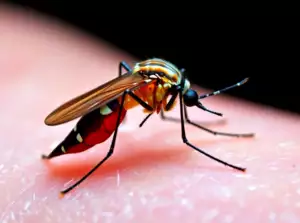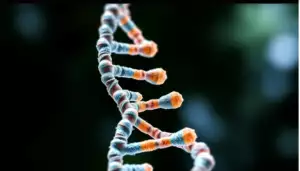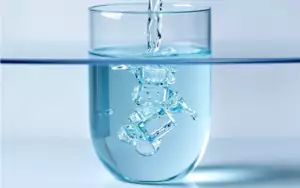Introduction
Hey, what’s up! Welcome to AP biology videos. Today, we’re diving into everything macromolecules. In the course and exam description, this video essentially covers everything from topic 1.3 to 1.6 and some more. So, let’s get into it with some crucial background information.
Composition of Macromolecules
Macromolecules are large, complex organic molecules critical to various biological processes. They are usually composed of many smaller molecules called monomers bonded together to create polymers, more of which we’ll explore later in the video. Before exploring macromolecules, we should understand them at a basic level. Since macromolecules are the building blocks of life, a fundamental understanding of them will help lay the path of many more cellular processes at a molecular level.
Macromolecules are organic compounds containing carbon, while inorganic molecules do not. Carbon is an incredibly versatile atom that is essential to life. The element can bind with many other elements and has multiple “slots” for binding. This versatility, caused by the atom’s four valence electrons, which allow it to form four covalent bonds, allows carbon to be the perfect element to create the large, complex molecules necessary for life.
You may wonder how a single carbon atom can transform into the small yet complex monomers of many macromolecules. The answer to that is functional groups! Functional groups are additional components of organic molecules with unique properties. The number and arrangement of these functional groups give each large molecule its unique properties. I’ll now put up a diagram of some of the most common functional groups on screen. Feel free to pause the video and explore their unique properties.Now that we know how organic molecules are built up, we can discuss some of the most important organic molecules—the four macromolecules.
Macromolecules are organic compounds containing carbon, while inorganic molecules do not. Carbon is an incredibly versatile atom that is essential to life
Composition of macromolecules
Some important Macromolecules
Let’s introduce them, shall we? In the corner over there, we have carbohydrates. On the other side are lipids. In the bleachers, we have proteins. Last but not least, we have nucleic acids on the mat.
You’ve watched enough of my videos to know what’s next. MORE BACKGROUND INFORMATION. Let’s go!
Most macromolecules are chain molecules that are called polymers. Polymers consist of individual building blocks called monomers unique to each macromolecule. These monomers are synthesized through dehydration synthesis, forming bonds between monomers by combining hydrogen from one monomer with the hydroxyl group of another, creating water as a byproduct (hence the dehydration in the name). The opposite occurs when polymers are placed in water, known as hydrolysis. Ok, so we have all the background information needed now; we are finally ready to dive deep into the world of macromolecules.
The first macromolecule is the carbohydrate. Carbs contain carbon, hydrogen, and oxygen in a 1:2:1 ratio. Their monomers are called monosaccharides, mono meaning one and saccharide meaning sugar. The two most relevant monosaccharides in our course are glucose and fructose. Glucose is an essential energy source for organisms created by plants through photosynthesis. Fructose is another familiar sugar found in plants used as an energy source. A unique thing about carbohydrate monomers is that they can be depicted as chained or ringed structures. Next in the chain are Disaccharides, or two monosaccharides joined together via dehydration synthesis. The bond resulting from the joined monomers is called a glycosidic linkage. Finally, we have polysaccharides consisting of many linked monosaccharides. We could explore many polysaccharides, but we would be here all day. However, only three are essential for us to know for the final exam: starch, glycogen, and cellulose. Starch is the primary form of storing energy in plants. It is, in essence, an energy bank that can be broken down into glucose when energy is needed for the different cellular processes. Glycogen is similar to starch in function but is encountered mainly in animals. Lastly, cellulose is used to support plants structurally. It is abundant in plants’ cell walls, providing structure due to its rigidity as a molecule.
The second macromolecule is the lipid. Like carbohydrates, lipids also consist of carbon, hydrogen, and oxygen, but not in a fixed ratio, and often contain less oxygen. Lipids are non-polar molecules and, thus, are hydrophobic. One unique property of lipids is that they do not form polymers. This is because lipids don’t have a monomer unit and are fat with a couple of fatty acids attached to a glycerol backbone. Lipids have many functions, such as long-term energy storage, structural components of cell membranes, sources of insulation, and even more nuanced things that we will discover later in our AP Bio journey.
Starting with energy storage, we have a particular type of lipid called a triglyceride. As described earlier, triglycerides incorporate a single glycerol backbone and three fatty acid chains. Fatty acid chains are long chains of carbon atoms where hydrogen atoms surround each carbon with a carboxy group at the end. Glycerol is a 3-carbon alcohol with a hydroxyl group attached to each carbon. For the fatty acids to combine with the glycerol molecule, dehydration synthesis must occur three times, each forming a bond known as an ester linkage. Oh, one more thing: fatty acids can be saturated or unsaturated, depending on the double bond amount. Saturated fatty acids don’t have any double bonds and are usually solid at room temperature. Unsaturated fatty acids contain a double bond, causing a bend in the carbon chain. This bend stops triglycerides from tightly packing together, making them liquid at room temperature. Ok, so how are they useful? Like polysaccharides, they function as energy-storage molecules ready to be used when necessary. Triglycerides stored in the fat tissue can also help insulate the body with a thermal insulation layer.
Next up, a distinct type of lipid called a phospholipid makes up and gives structure to cell membranes. Like triglycerides, they contain a glycerol backbone; instead of 3 fatty acids, they have two fatty acids, “tails,” with the third replaced with a negatively charged phosphate, “head.” The tails are hydrophobic, while the polar head is hydrophilic or water-loving. Due to this property of phospholipids (molecules that are both polar and non-polar are called amphipathic molecules), when placed in water, phospholipids will assemble into a “lipid bilayer.” The hydrophobic tails of the phospholipids turn away from the water to face each other while the phosphate heads face the water head-on.
The last lipids we are covering today are steroids. On the exam, you will most likely see cholesterol mentioned. Cholesterol is a four-ringed molecule found throughout the cell membrane. Its goal is to help maintain membrane stability—increasing fluidity at lower temperatures by stopping close packing and decreasing fluidity at high temperatures by allowing constant movement in the membrane.
Let’s move on to the third macromolecule of the day: proteins. Proteins contain the elements carbon, hydrogen, oxygen, and nitrogen. The monomers of proteins are known as amino acids. Amino acids have four parts surrounding a central carbon atom: an amino group, a carboxyl group, a hydrogen atom, and an interchange r group (side chain). These r groups have varied chemical properties, such as polarity and charge. After amino acid monomers join together to assemble a growing polypeptide chain, through dehydration synthesis, these R groups can interact with each other to determine the structure and function of that region of the protein. By the way, dehydration synthesis creates peptide bonds between amino acids.
At its most basic level, a protein is a linear sequence of amino acids (imagine a stretched-out polypeptide). Before a polypeptide can become a functional protein, it must undergo four levels of protein folding, otherwise referred to as protein structures. We have already defined the primary structure: the linear sequence of amino acids.
Conclusion
The secondary structure occurs when interactions between amino and carboxyl groups occur. This interaction causes the proteins to twist into two shapes: an alpha-helix or a beta-pleated sheet, the shape depending again on r groups. These shapes allow amino acids that were once far away from each other to get close enough for interactions between r groups, such as hydrogen bonds, ionic bonds, disulfide bridges, and hydrophobic interactions, thus leading to the tertiary structure. Last but not least is the quaternary structure. On occasion, several different polypeptide chains interact with each other through the same bonds as before, but this time, they are between the polypeptide chains rather than r groups.
Once these four levels of protein folding occur, the polypeptide chain is transformed into its final functional form, which is ready to serve its cellular function. On the topic of function, let’s explore the function of proteins, shall we? In the next few minutes, multiple types of proteins and some details about their function will appear on the screen.
There are structural proteins, enzymatic proteins, transport proteins, regulatory proteins, defensive proteins, storage proteins, signaling/hormonal proteins, and membrane proteins.




